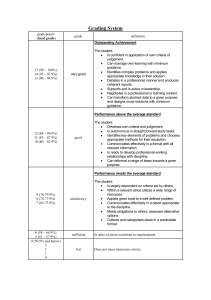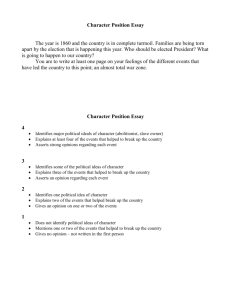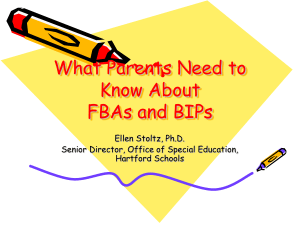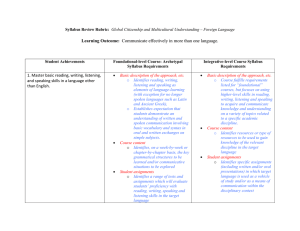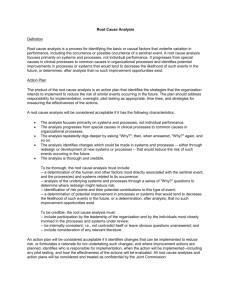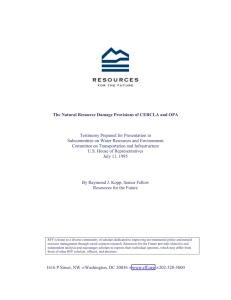Theoretical Framework Logical Structure
advertisement
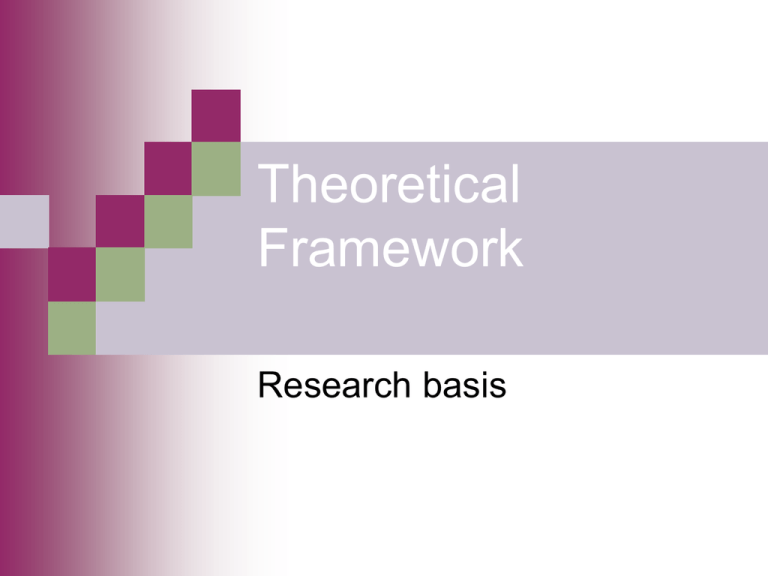
Theoretical Framework Research basis Theoretical Framework What is the central concept(s) integral to the study? (look within and outside LIS) Connecting the study to theory: basic research Good Theory Advances knowledge in a discipline, guides, research, enlightens the discipline, helps the discipline mature and gain validation Enables us to rise above the seemingly random confusion of everyday life to see patterns and to understand principles on which to base purposeful, productive action Provides an important context Theory vs. Practice We cannot do without theory. It will always defeat practice in the end for a quite simple reason. Practice is static. It does well what it knows. It has, however, no principle for dealing with what it doesn’t know … Practice is not well adapted for rapid adjustments to a changing environment. Theory is light footed, it can adapt itself to changed circumstances, think out fresh Out fresh combinations and possibilities, peer into the future. Theory provides a clear framework, administrative practice reduces to a series of meaningless acts, without purpose of direction. Source: Charles H. Granger, Harvard Business Review 42 (May-June 1964), p. 64. Theory Provides patterns for the interpretation of data Links one study to another Supplies frameworks within which concepts and variables acquire special significance Allows us to interpret the larger meaning of our findings for ourselves and others Source: The elements of social scientific thinking, p. 40 Examples Information needs information-seeking behavior Expectations service quality Satisfaction Effectiveness Teams/small groups Success Reference Transactions Standards RUSA, IL, Accreditation Value See Measuring your library’s value, Donald S. Elliott et al (ALA, 2007) Theoretical Framework Dalbello, M. (2009). Cultural dimensions of digital library development: Part II the cultural innovations of five European national libraries. Library Quarterly, 79(1). Culture = National Culture + Organizational Culture + Professional Culture + Heterogeneous Tool Kit Culture Logical Structure Who, what, when, where, how… Logical Structure Explicitly addresses all the possible variables within a study Identifies all of the important components Is a menu of choices--no decisions are represented The decisions = objectives Logical Structure (Components) Addresses the questions of What (problem statement) Who Where When How (methods) Logical Structure Not always directly addressed within the published study, but must be addressed by the research during the planning stages. Often possible to represent the logical structure through a diagram or model What Identifies the problem under study May help to brainstorm for contributing factors, causes and effects May have to operationalize terms= i.e. success, efficiency, effectiveness, etc. Some methods: Flow Chart Five Why’s Fishbone Diagram Fishbone Diagram Dr. Kaoru Ishikawa Policies Materials People Problem Statement Process Technology Who The group under study Identifies the population Identifies the sample within the population May have to justify choices When The time frame of the study Data collection Literature review Correcting for lapses Sets deadlines Creates context Where Identify the environment Sets parameters How Methodologies How will data be collected What is appropriate? User/Use Study Use Students Simmons College When How Use/Nonuse Study Where: one to many places How When: 1-many times Library Use NonUse Add Variables Students E-book Use Where When How User (Search) Behavior Undergraduates variables variables Objectives Indicate what was selected from the “menu” or logical structure Components of Objectives To ____verb Object Basic: to conceptualize Applied: to test Action: to describe Objectives To “describe” identify define distinguish determine Depict etc. To “relate:” “compare” or “contrast” (relating applies to basic, applied, and action research) Objectives To identify the attributes (requirements, responsibilities, qualifications, and salaries/benefits) of music librarians To determine the extent to which their responsibilities relate solely to music librarianship To compare the attributes listed most frequently in job advertisements with those attributes leading to the actual hiring of individual To compare the list of attributes identified in job advertisements by: geographical area, highest degree offered by the institution, institutional control (private vs. public) Evaluation Questions How much? How many? How economical? How prompt? How accurate? How responsive? How well? How valuable? How reliable? How courteous? How satisfied? --------------------------- Accountability and Effectiveness = How well? Collections/ services Community served: customers Facilities Technology and its use Collections/ services Community served: customers Facilities Technology and its use Examples: How much? How many? How well? How satisfied?
